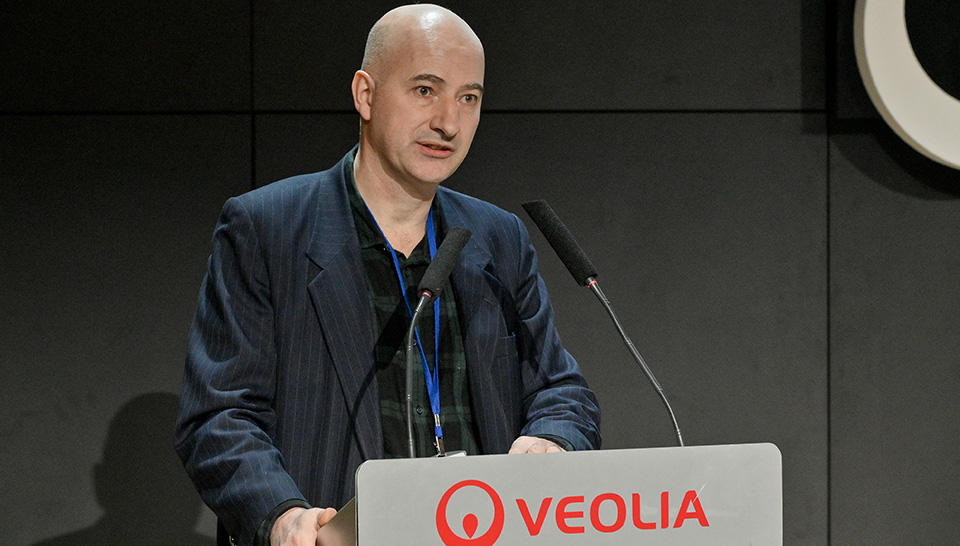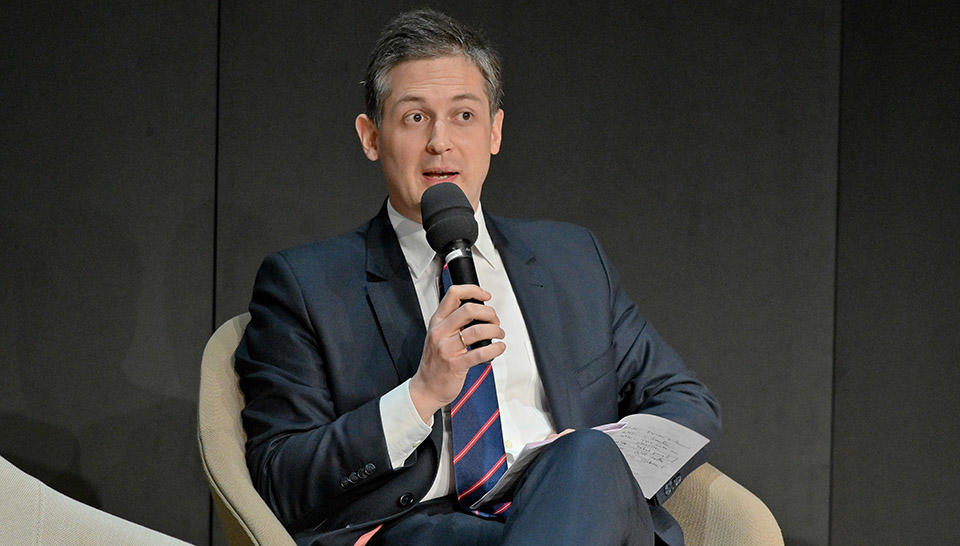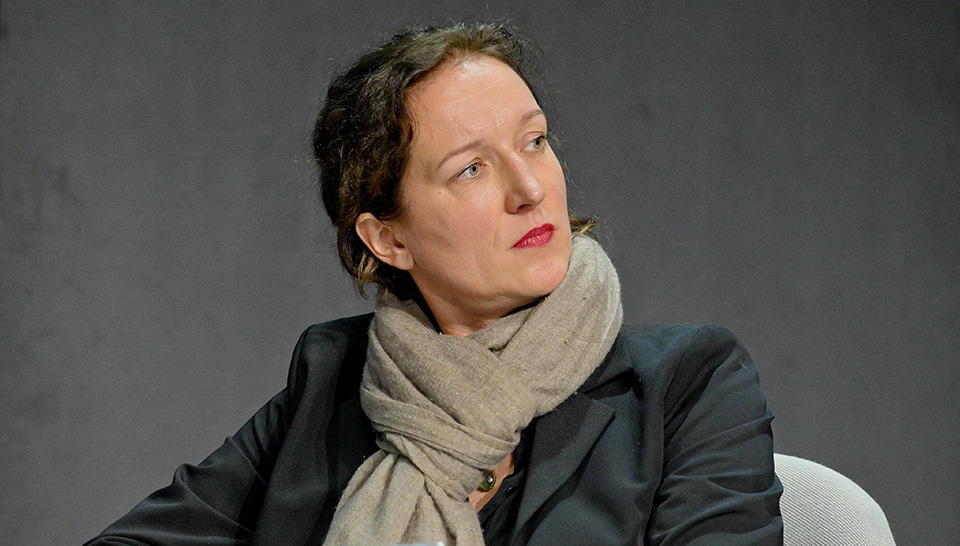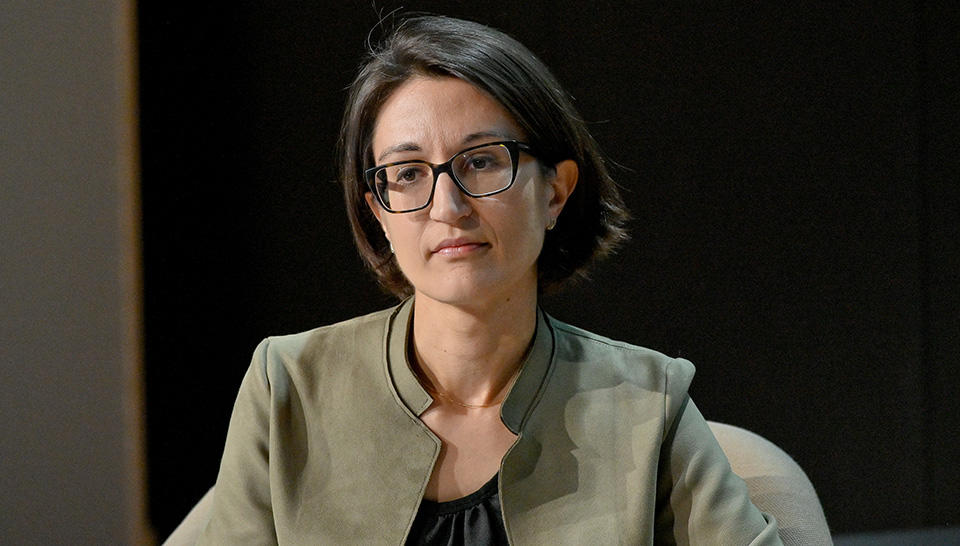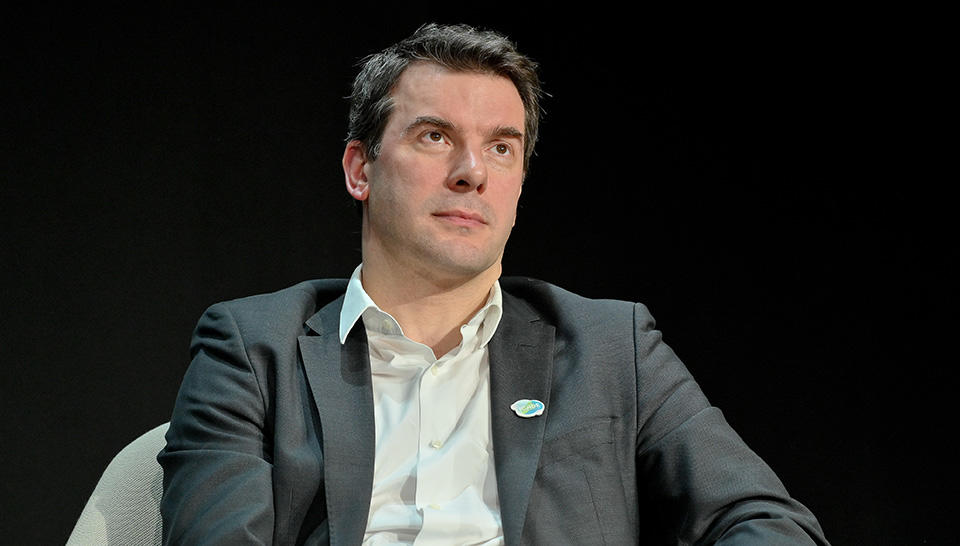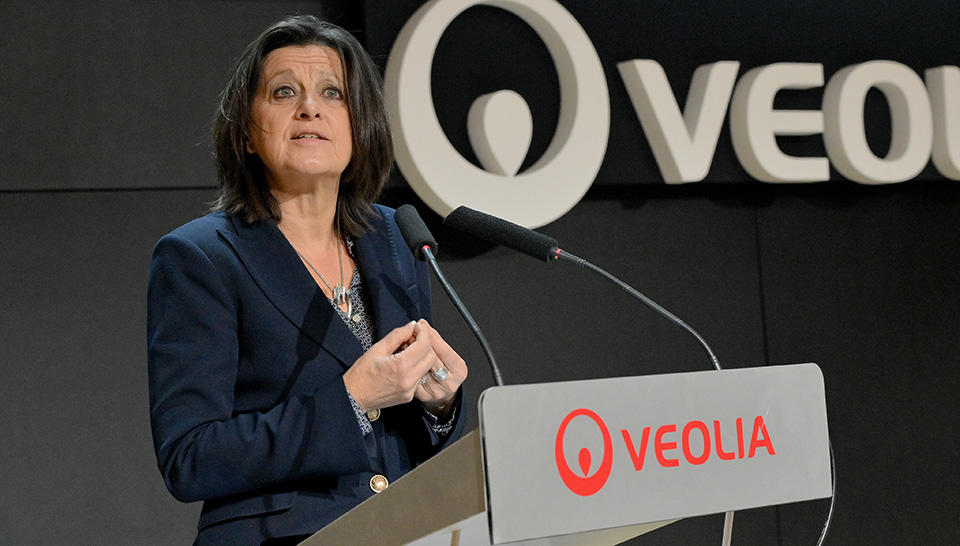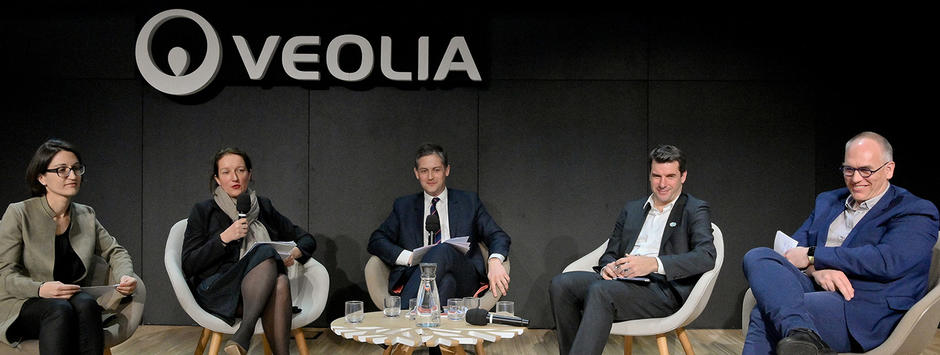
Chaired by Cédric Baecher, co-founder of Nomadéis (centre), the conference was attended by (from left to right): Corinne Mandin, Head of the Indoor Air Quality Observatory (OQAI) at the Scientific and Technical Centre for Building (CSTB) Séraphine Haeussling, Coordinator Household Energy, Climate and Clean Air Coalition (CCAC), Benjamin Ficquet, Icade Property & Exploitation Director, Frédéric Bouvier, Director of Veolia's Air Expertise Cluster.
Indoor air pollution affects homes, offices, schools and transportation where we spend 80% of our time. Sometimes these spaces are more polluted than the outdoor air. To address this public health issue, the Veolia Institute organized a conference on 6 March at the Group's headquarters in Aubervilliers, coinciding with the publication of the Facts Reports on "Indoor air quality: tacking invisible challenges". The main aspects of the discussions.
The World Health Organization (WHO) estimates that globally there are 3.8 million deaths per year caused by poor indoor air quality. The first driver is measuring the indoor air quality in each building. Then circulating air flows have to be treated with effective solutions that ensure everyone’s right to breathe healthy air.
Improving indoor air quality should be a global priority
Séraphine Haeussling, Coordinator Household Energy, Climate and Clean Air Coalition (CCAC) pointed out that:
The Climate and Clean Air Coalition (CCAC) brings together 69 governments, public and private organizations and civil society to reduce short-lived climate pollutants such as carbon black, methane, hydrofluorocarbons and ozone. The Coalition is a catalyst for implementing immediate solutions to combat these pollutants. Indoor pollution, directly linked to poverty, mainly affects the most vulnerable (women and children), for example without access to electricity. Initiatives to improve indoor air quality must therefore be considered a global priority.
For Corinne Mandin, from the Indoor Air Quality Observatory (OQAI) at the Scientific and Technical Centre for Building (CSTB) in France:
Over the past decade or so, indoor air quality has become a major factor in environmental health. And we're finding that nearly 10% of offices and homes are polluted by more than one type of pollutant. The ongoing development of miniaturized and connected sensors measuring certain pollutants will make it possible to monitor the air quality in buildings on a massive scale, and thus provide an early warning system so that action can be taken in the event of pollution. Indoor air quality can now be estimated thanks to Mathis-Qai, a simulation and building design tool. As indoor air quality has become a performance criterion for buildings, it is increasingly at the heart of societal concerns and expectations in terms of health protection."
Managing the complexity of indoor air is a challenge
Benjamin Ficquet, Icade Property & Exploitation Director explained:
"At Icade's head office in Issy-les-Moulineaux (Île-de-France), Veolia assesses the indoor air in our "flexoffice" workspaces. During hot spells we found that by eliminating volatile organic compounds (VOCs), we had to increase humidity to improve occupant comfort, which has an impact on the energy bill. Rambuteau's motto in the 19th century still holds true: "in Paris, you need water, air and shade". As early as the building design stage, we can use "climate scenarios", as Solideo (Olympic facilities delivery company) has done, to model the use in 2040 of the future 2024 Paris Olympics village. We also model the pollution forecast for the "new air" intakes for future buildings in Bercy located in areas of heavy road traffic,"
Frédéric Bouvier, Director of Veolia's Air Expertise Cluster confirmed:
"For Veolia, guaranteeing air quality in a building first of all requires establishing a diagnosis by identifying the nature of the pollution and measuring its level. This is the "AIR Control" service. Then, this pollution has to be treated by applying techniques appropriate to the type of building with "AIR Performance". Finally, in order to achieve long-term results it is essential to involve the occupants with "AIR Human". For example: more than 90% of schools in France are affected because particles enter buildings that are not airtight. And the containment causes levels of 4000 to 5000 ppm of CO2 in some classrooms, which is well above the WHO recommendations. This is why in Raincy Veolia is improving the air quality in two schools for 600 students, with a guarantee of results. In addition, building monitoring will increase our understanding of indoor air in order to guide future building design and operation rules,"
Building a skills pool in the context of ecological transformation
Sabine Fauquez-Avon, CEO of OFIS and President of Veolia's Air Expertise Cluster, wrapped up the conference: «Awareness is widespread, the health risks are known and people’s expectations are high, as revealed by the surveys conducted by the Institut Elabe for Veolia. Buildings must be energy efficient, but indoor air quality cannot be disregarded. This is why, as with the treatment of other challenging pollutants, Veolia is committed to guaranteeing results, because when it comes to health risks, a means-based approach is not sufficient. The question of the value of air quality is still an issue. To assess it, we must take into account not only the costs of improving air quality but also its benefits, such as productivity gains or reduced absenteeism. It is also an opportunity for us to build a new skill set in the context of ecological transformation.»
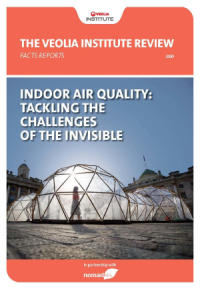
Find all the Facts Reports articles on “Indoor air quality: tackling invisible challenges”; this issue was produced in partnership with the sustainable development consulting firm Nomadéis


